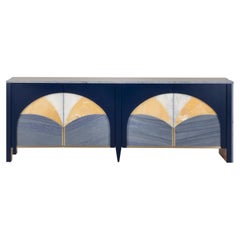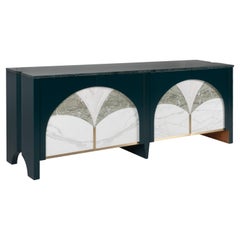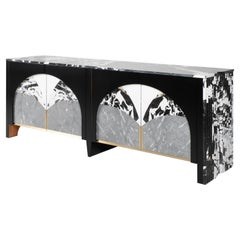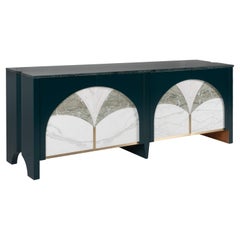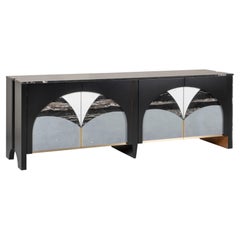Biloba Sideboard
21st Century and Contemporary Portuguese Modern Cabinets
Marble, Onyx, Travertine, Statuary Marble, Brass
21st Century and Contemporary Portuguese Modern Sideboards
Marble, Statuary Marble, Onyx, Travertine, Brass
21st Century and Contemporary Portuguese Art Deco Cabinets
Onyx, Stone, Marble, Brass
21st Century and Contemporary Portuguese Art Deco Cabinets
Statuary Marble, Marble, Travertine, Onyx, Brass
21st Century and Contemporary Portuguese Art Deco Sideboards
Onyx, Travertine, Marble, Statuary Marble, Brass
Recent Sales
21st Century and Contemporary Portuguese Modern Cabinets
Marble, Brass
People Also Browsed
21st Century and Contemporary Portuguese Mid-Century Modern Cabinets
Onyx, Carrara Marble, Statuary Marble, Brass
21st Century and Contemporary Spanish Cabinets
Oak
2010s Canadian Modern Chandeliers and Pendants
Brass
21st Century and Contemporary Italian Wall Lights and Sconces
Metal
2010s American Mid-Century Modern Flush Mount
Brass, Bronze, Enamel, Chrome, Nickel
Vintage 1950s Italian Mid-Century Modern Pier Mirrors and Console Mirrors
Mirror, Walnut, Burl
Antique Late 18th Century Austrian Rococo Mantel Clocks
Giltwood
20th Century Moroccan Moorish Lanterns
Metal
2010s British Art Deco Wall Mirrors
Brass
2010s American Modern Candelabras
Brass
21st Century and Contemporary Italian Industrial Wall Lights and Sconces
Iron
21st Century and Contemporary Austrian Mid-Century Modern Floor Lamps
Iron, Brass
Antique 1830s Japanese Edo Lacquer
Lacquer
Vintage 1940s Belgian Folk Art Platters and Serveware
Metal, Wrought Iron
Vintage 1970s German Modern Paintings
Acrylic
Vintage 1970s American Mid-Century Modern Sectional Sofas
Fabric, Laminate
Greenapple for sale on 1stDibs
The Greenapple furniture company creates captivating pieces using novel forms, colors and materials inspired by modern and Art Deco styles. Its unique 21st-century furniture combines luxury and an uncommon eye for design. Greenapple creates high-end furniture for homes, hotels and commercial spaces, with the tastes and needs of its clients considered in every step of the design process.
The furniture company was started in 2005, when Portuguese economists Rute Martins and Sérgio Rebola teamed up with the idea of employing traditional Portuguese craftsmanship to create beautiful bespoke furniture and decor.
Over time, Greenapple grew to a team of 30 craftspeople, all bringing their individual skills to each new design. A master woodworker, upholsterer and finishing specialist lead the team, with their work also passing down this expertise to the next generation of creators.
Greenapple challenges the uniformity of mass-produced furniture, such as in its playful forms for velvet-upholstered seating and wall mirrors that involve eclectic materials like green onyx, gold leaf and marble. Whether infusing complexity into the structure of a side table or bringing a silhouette of simple elegance to a set of uncomplicated dining chairs, Greenapple incorporates bold concepts and fresh ideas into every piece.
Greenapple has showcased its work around the world, including in Shanghai in 2018 for an Associative Design business mission. The company has an international clientele, including collectors in Asia, North America and across Europe.
On 1stDibs, explore the vibrant luxury of Portuguese master craftsmanship with Greenapple seating, tables, lighting, decorative objects and more.
Materials: Brass Furniture
Whether burnished or lacquered, antique, new and vintage brass furniture can elevate a room.
From traditional spaces that use brass as an accent — by way of brass dining chairs or brass pendant lights — to contemporary rooms that embrace bold brass decor, there are many ways to incorporate the golden-hued metal.
“I find mixed metals to be a very updated approach, as opposed to the old days, when it was all shiny brass of dulled-out silver tones,” says interior designer Drew McGukin. “I especially love working with brass and blackened steel for added warmth and tonality. To me, aged brass is complementary across many design styles and can trend contemporary or traditional when pushed either way.”
He proves his point in a San Francisco entryway, where a Lindsey Adelman light fixture hangs above a limited-edition table and stools by Kelly Wearstler — also an enthusiast of juxtapositions — all providing bronze accents. The walls were hand-painted by artist Caroline Lizarraga and the ombré stair runner is by DMc.
West Coast designer Catherine Kwong chose a sleek brass and lacquered-parchment credenza by Scala Luxury to fit this San Francisco apartment. “The design of this sideboard is reminiscent of work by French modernist Jean Prouvé. The brass font imbues the space with warmth and the round ‘portholes’ provide an arresting geometric element.”
Find antique, new and vintage brass tables, case pieces and other furnishings now on 1stDibs.
Finding the Right Storage-case-pieces for You
Of all the vintage storage cabinets and antique case pieces that have become popular in modern interiors over the years, dressers, credenzas and cabinets have long been home staples, perfect for routine storage or protection of personal items.
In the mid-19th century, cabinetmakers would mimic styles originating in the Louis XIV, Louis XV and Louis XVI eras for their dressers, bookshelves and other structures, and, later, simpler, streamlined wood designs allowed these “case pieces” or “case goods” — any furnishing that is unupholstered and has some semblance of a storage component — to blend into the background of any interior.
Mid-century modern furniture enthusiasts will cite the tall modular wall units crafted in teak and other sought-after woods of the era by the likes of George Nelson, Poul Cadovius and Finn Juhl. For these highly customizable furnishings, designers of the day delivered an alternative to big, heavy bookcases by considering the use of space — and, in particular, walls — in new and innovative ways. Mid-century modern credenzas, which, long and low, evolved from tables that were built as early as the 14th century in Italy, typically have no legs or very short legs and have grown in popularity as an alluring storage option over time.
Although the name immediately invokes images of clothing, dressers were initially created in Europe for a much different purpose. This furnishing was initially a flat-surfaced, low-profile side table equipped with a few drawers — a common fixture used to dress and prepare meats in English kitchens throughout the Tudor period. The drawers served as perfect utensil storage. It wasn’t until the design made its way to North America that it became enlarged and equipped with enough space to hold clothing and cosmetics. The very history of case pieces is a testament to their versatility and well-earned place in any room.
In the spirit of positioning your case goods center stage, decluttering can now be design-minded.
A contemporary case piece with open shelving and painted wood details can prove functional as a storage unit as easily as it can a room divider. Alternatively, apothecary cabinets are charming case goods similar in size to early dressers or commodes but with uniquely sized shelving and (often numerous) drawers.
Whether you’re seeking a playful sideboard that features colored glass and metal details, an antique Italian hand-carved storage cabinet or a glass-door vitrine to store and show off your collectibles, there are options for you on 1stDibs.
